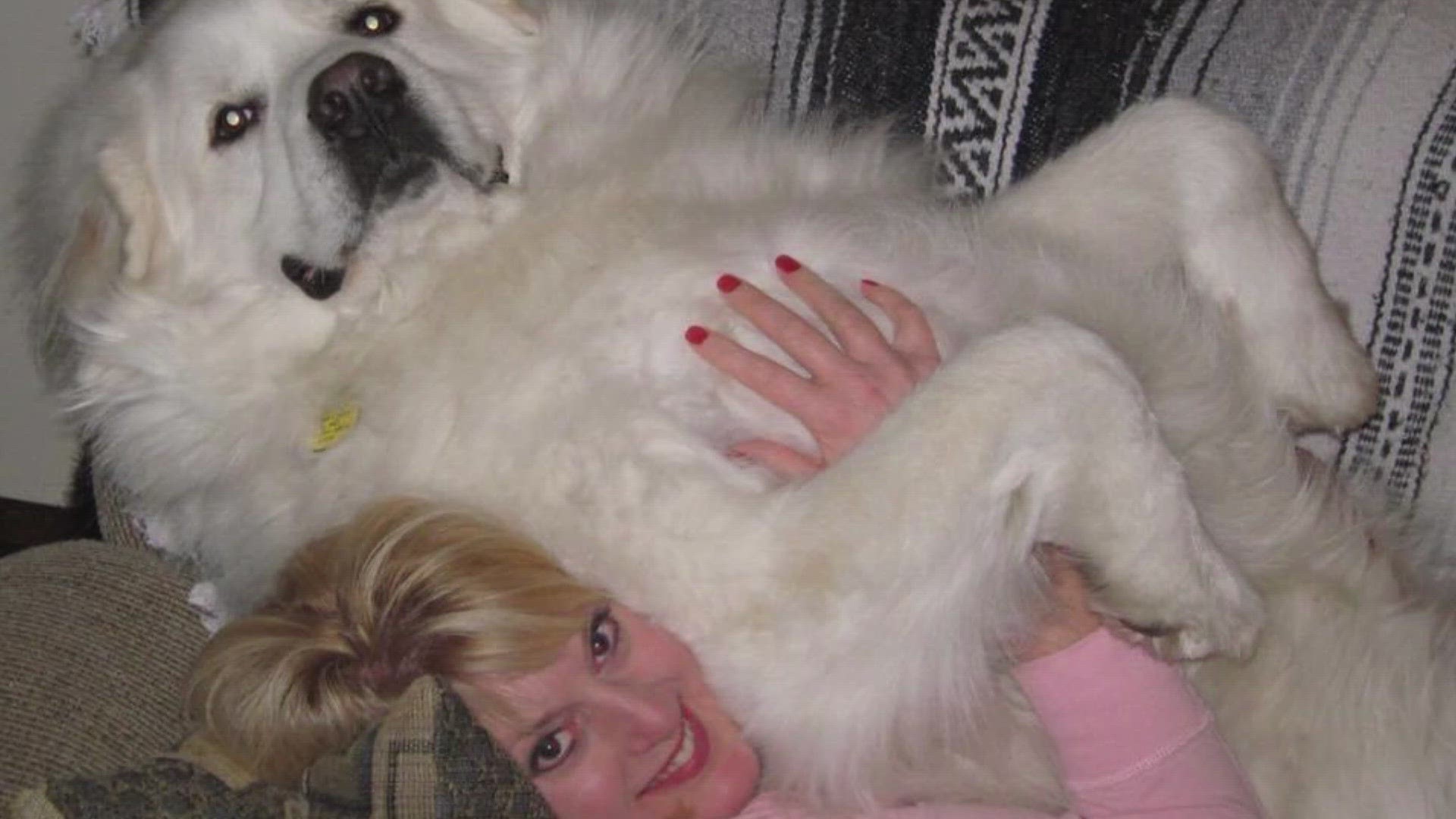HIGHLAND HEIGHTS, Ohio — For 11 wonderful years I was luck to be Griffin's human. A protector, couch companion and all-around great dog. It wasn't old age that robbed him of more years in 2018, but a disease known as Gastric Dilatation and Volvulus.
GDV can strike large breed dogs with deep chests such as Great Danes, Saint Bernards and Great Pyrenees like Griffin. In GDV a dog's belly can fill with gas, food, or liquid (known as bloat) and then twist or flip on itself.
"It can lead to death of the stomach and because of the shock, it's deadly quickly. Usually within 24 to 36 hours."
Dr. Sheldon Padgett is Senior Surgeon specializing in soft tissue disease at Metropolitan Veterinary Hospital in Highland Heights. He says understanding the signs of GDV can save your dog's life.
"One of the biggest things you're gonna see is him being anxious and whatnot, and also widening below the ribcage here," Dr. Padgett demonstrated on a dog.
In addition, look for pale gums, excessive drooling, rapid breathing, and non-productive retching. You may also notice your dog's head pointing to his belly.
Diagnosed by x-ray, veterinarians first work to stabilize the dog, insert a tube to relieve some of the stomach pressure - before they work to untwist it during surgery.
"It's the most common disease that we see, in the middle of the night that we take them to surgery for. So it it's a life-threatening disease. Twenty to thirty-percent of those patients don't make it," Dr. Padgett said.
We recognized the symptoms in Griffin and got him into emergency care within 45 minutes.
He survived the surgery, but didn't fully recover. Sadly we said goodbye to him a few days later.
"These dogs that are predisposed to it, if we know they're predisposed to it, if they're having surgery for another reason like a spay or a neuter, it's a common time for us to say, let's do something to keep this from happening so you don't have to worry about it ever," Dr. Padgett said of a preventative surgery known as Gastropexy. It is not new, but has changed over the years. Traditional surgery involves an incision from chest to abdomen. But now it can also be done via a laparoscopic procedure.
" If we do it from a minimally invasive standpoint, they tend to do really well from a preventive surgery, tend to go home either the same day or the day after surgery," Dr. Padgett said.
That's the route we took with Fergus, who turned five last year, a choice we made after talking to our veterinarian. And if a larger dog is part of your family too, talking with your vet about GDV is the first step in reducing the chance it happens to your gentle giant.
To reduce the chances of GDV in your dog, follow these steps:
- Reduce stress around eating time - especially if your dog is protective of their food and eats quickly to prevent other pets from getting it. Try feeding them in a separate, cordoned-off area or any other place where they won't be bothered. \
- Feed smaller meals - Small meals throughout the day, rather than one large meal causes the gastrointestinal system to function throughout the day. Asking them to digest one large meal can result in a large amount of gas which may build up and result in the stomach rotating.
- Slow down eating - scarfing food rapidly can lead to bloat. Try "food puzzles" or feeders to slow down their chow.
- Do not feed before or after exercise: Wait 30 to 60 minutes so they are not panting and taking in air while they are eating. It's the potential of gulping in large amount of air that can cause your dog to develop GDV before or after exercise.
- Slow water intake: Same goes with water intake before, during or after vigorous exercise. You want your dog to stay hydrated, but gorge themselves on water.
More Ready Pet GO! Stories on WKYC.com:

